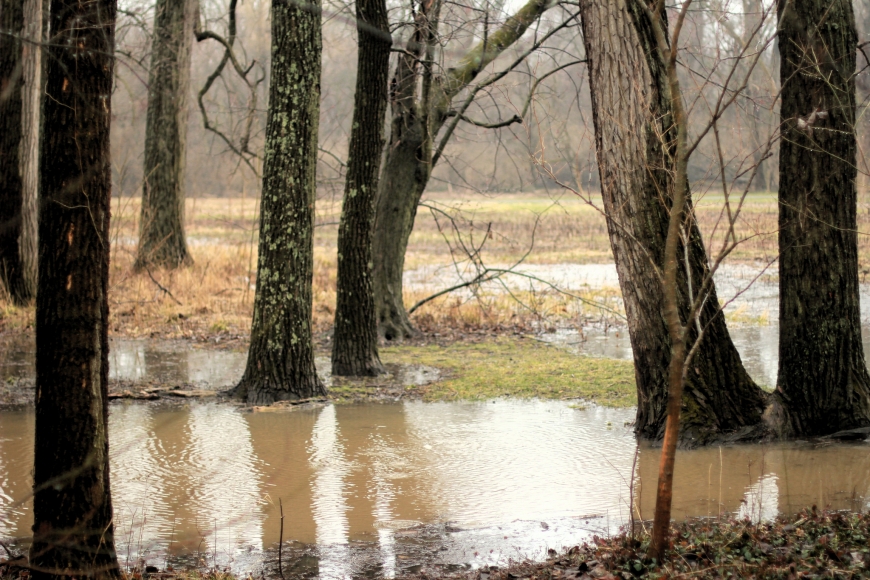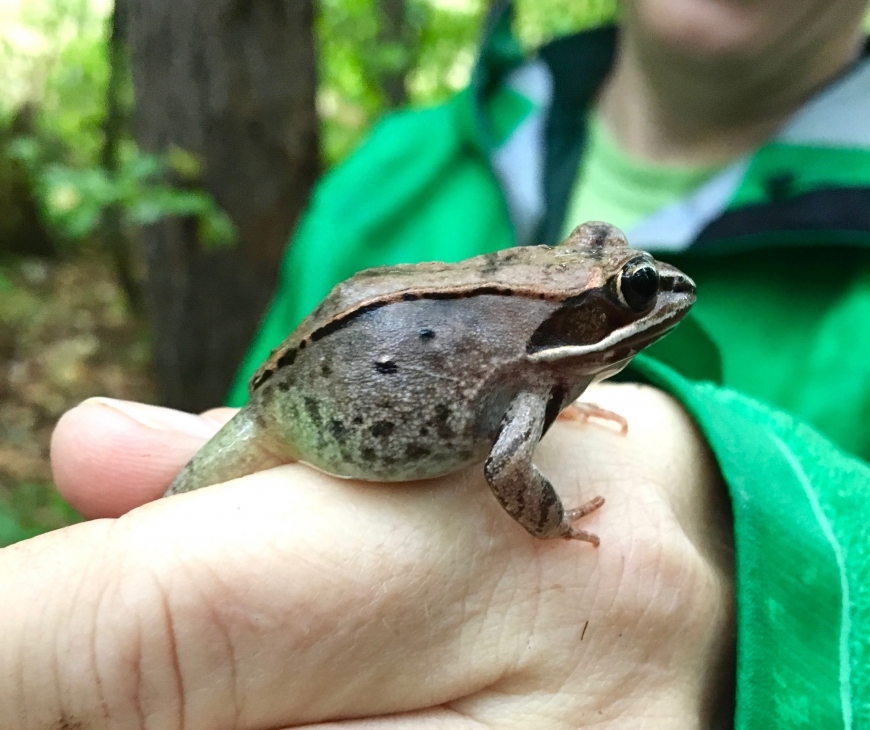

Vernal pool. Photo: Robbt, Flickr Creative Commons.
Wood frogs are often found feeding at vernal pools in the North Country woods. Photo: St. Lawrence Mammalogy Class 2016.


Springtime Vernal Pools
April showers bring May flowers, but they also bring something else to the North Country: vernal pools. Vernal pools are small wetlands that temporarily form in spring and dry up by late summer. They form in woodlands and backyards in small depressions in the ground and are ecologically important for a variety of reasons.
In early spring, amphibians such as wood frogs, spring peepers, and spotted salamanders come out of hibernation to attract mates and begin their breeding processes. Most amphibians need freshwater to lay their eggs and utilize riverbanks, ponds, and vernal pools to do so. The temporary nature of vernal pools also means would-be predators such as fish can’t survive in them, making them safer for amphibians and their offspring.
Vernal pools are also important nutrient sources for the tadpoles and invertebrates who are preyed upon by larger wildlife, supporting an important link in the woodland food chain. Plus, they provide a convenient place for other amphibians to eat or rest during migration.
During your spring woodland walks, look out for vernal pools: you might spot a critter or two!

